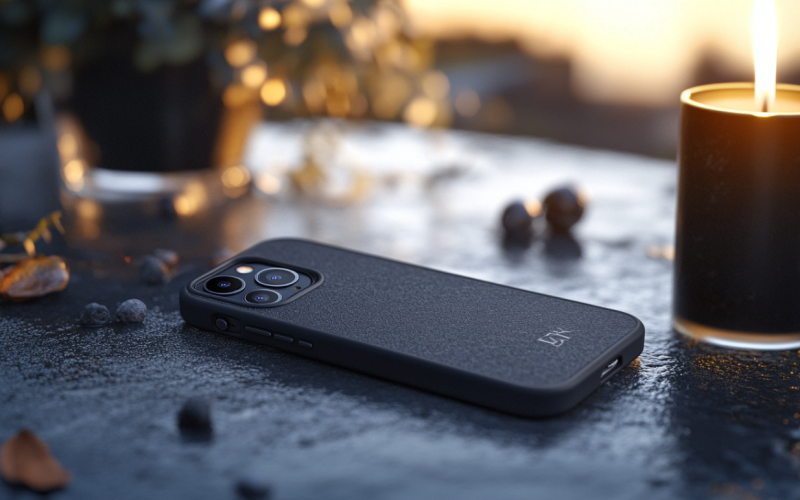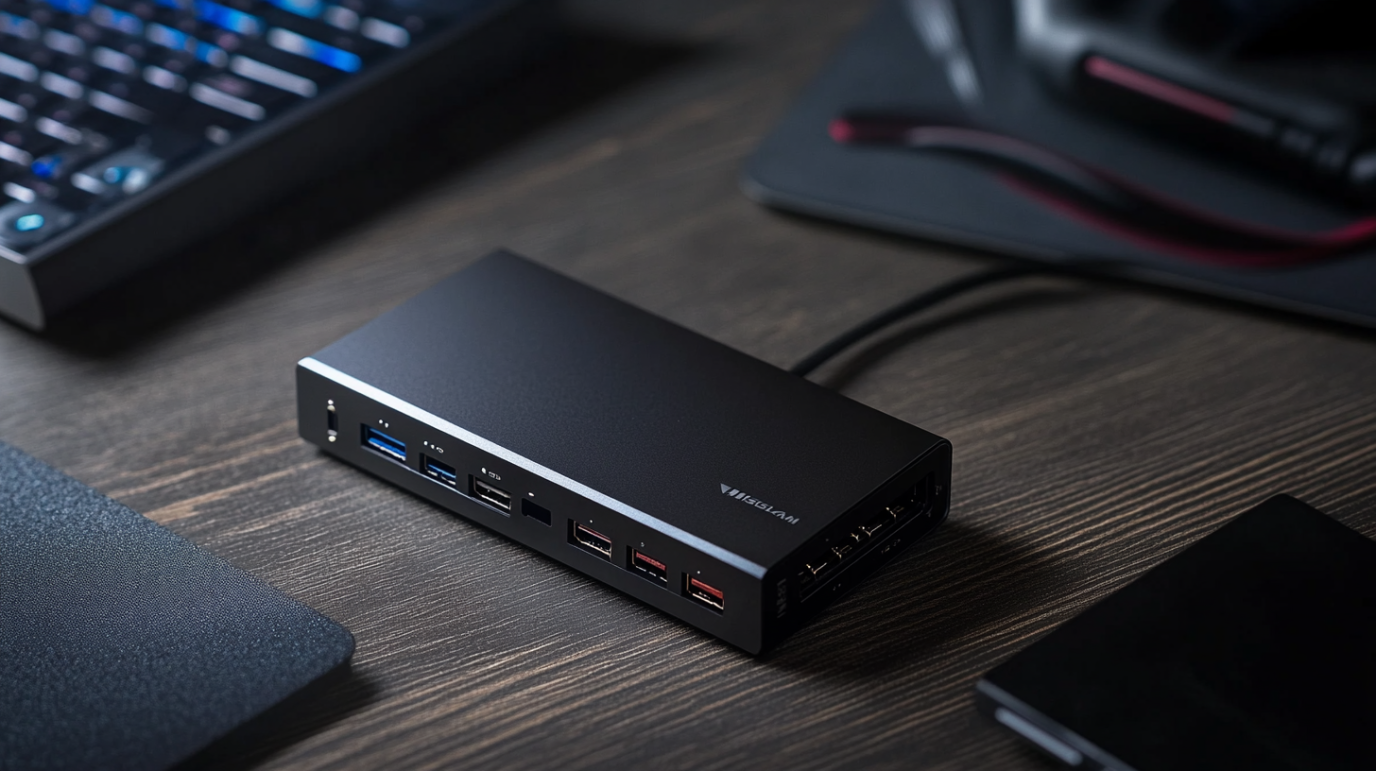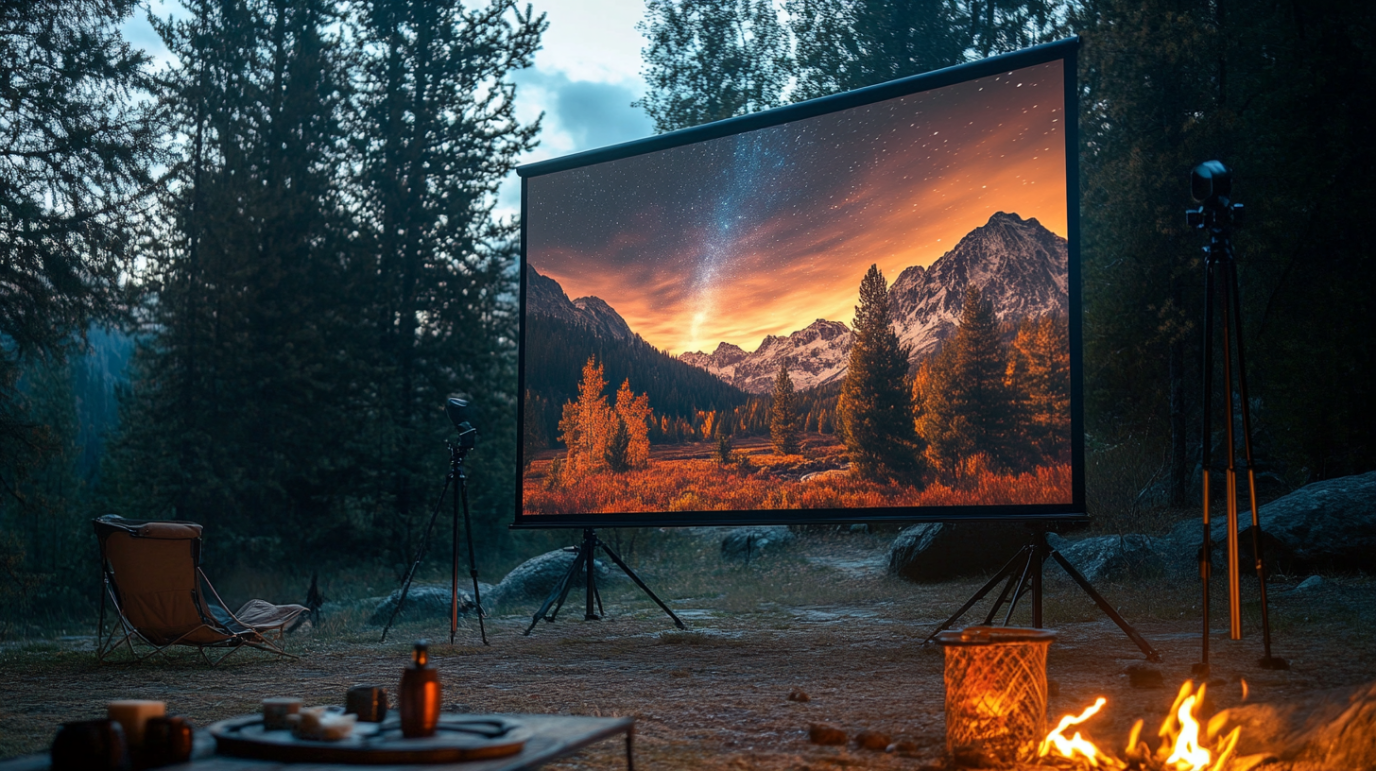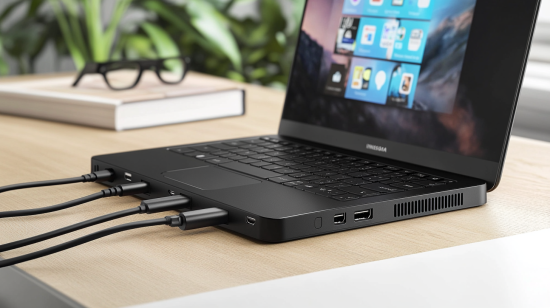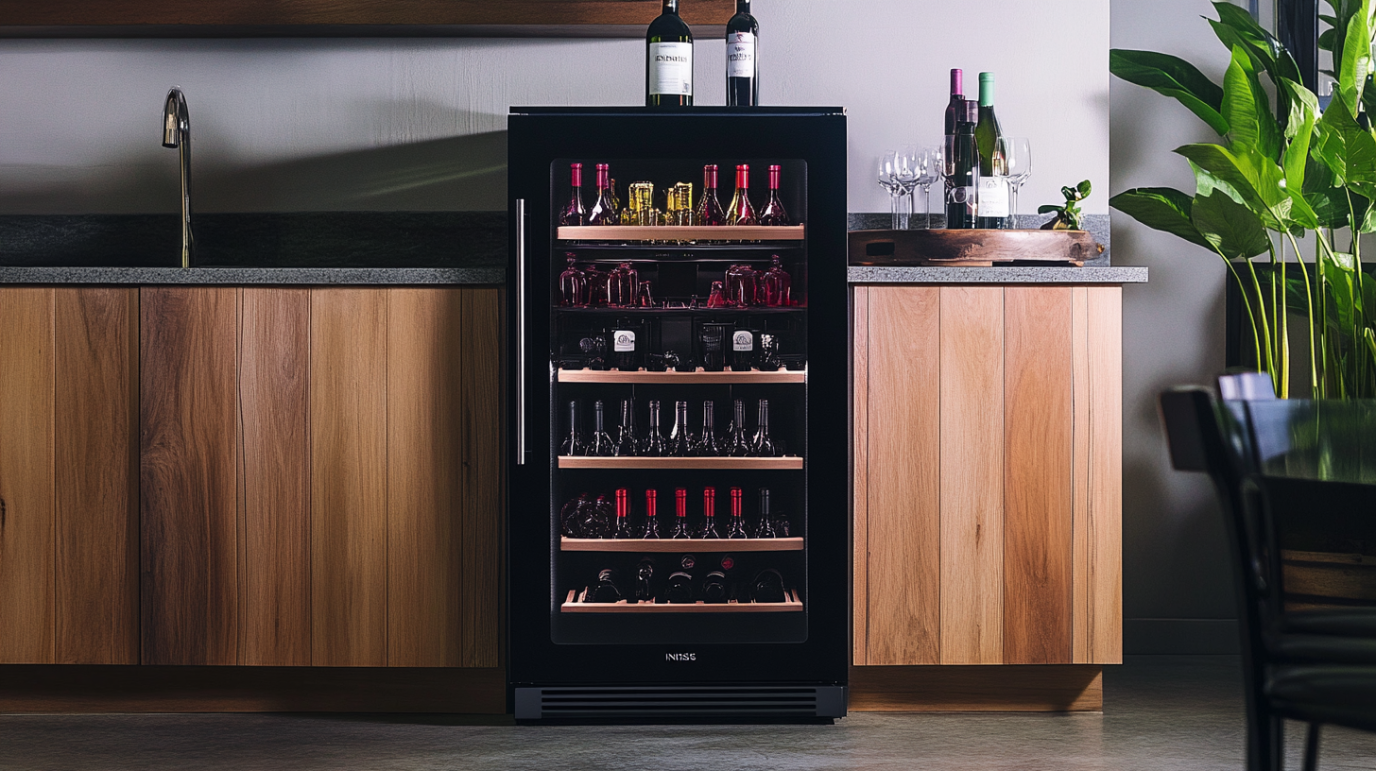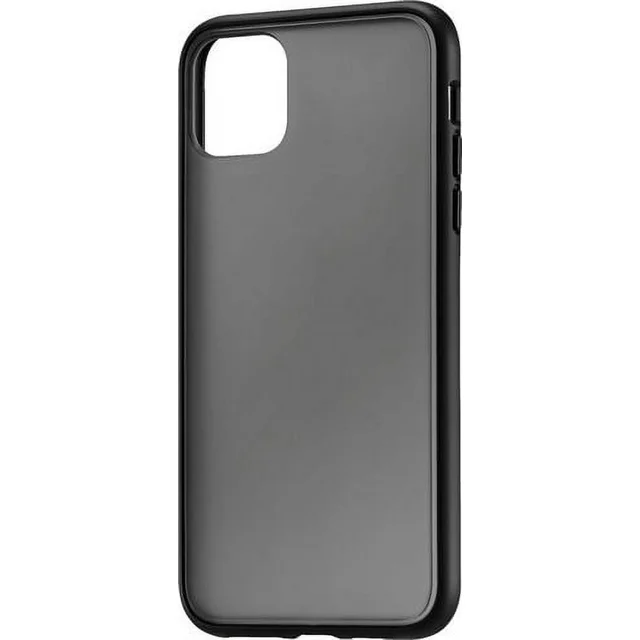
Insignia™ – Hard Shell Case for Apple® iPhone® 11 Pro Max – Transparent Black
- Insignia™ – Hard Shell Case for Apple® iPhone® 11 Pro Max – Transparent Black
$8.99
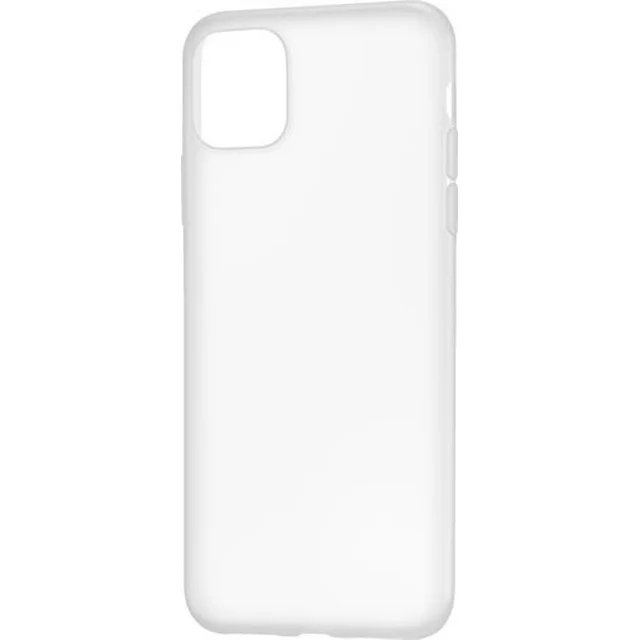
Insignia™ – Ultra Thin Wrap Case for Apple® iPhone® 11 Pro Max – Smoky Clear
- Insignia™ – Ultra Thin Wrap Case for Apple® iPhone® 11 Pro Max – Smoky Clear
$9.99
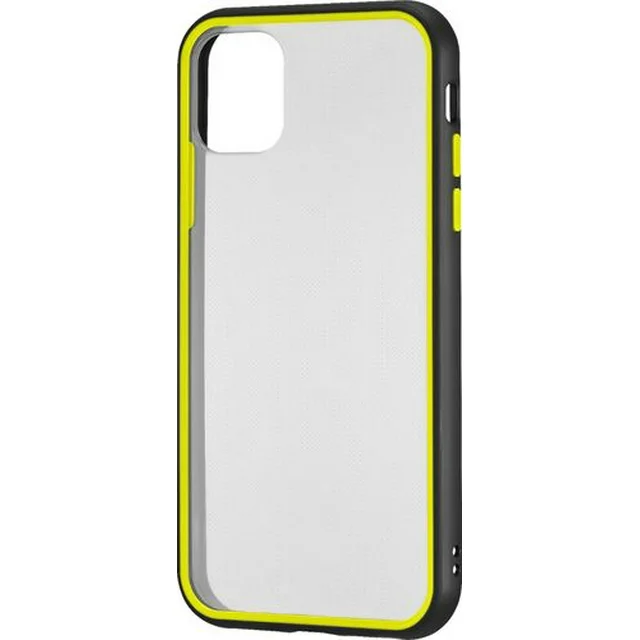
Insignia™ – Active Bumper Hard Shell Case for Apple® iPhone® 11 – Black/Yellow
- Insignia™ – Active Bumper Hard Shell Case for Apple® iPhone® 11 – Black/Yellow
$13.99
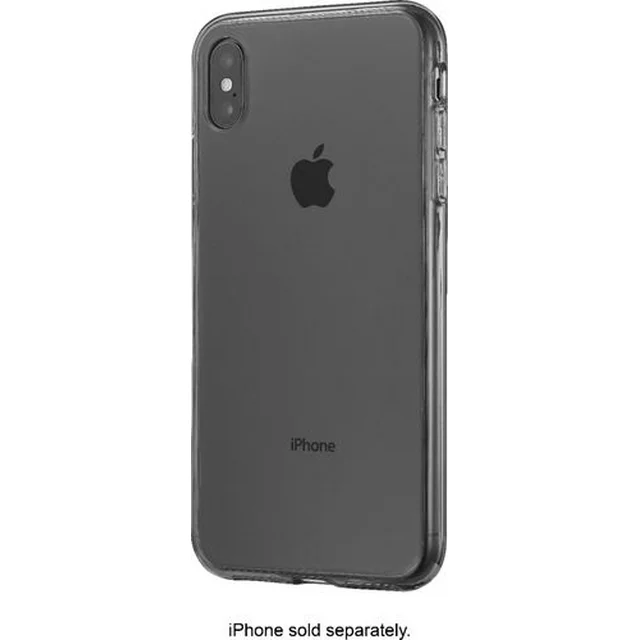
Insignia™ – Protective Case for Apple® iPhone® XS Max – Black/Transparent
- Insignia™ – Protective Case for Apple® iPhone® XS Max – Black/Transparent
$12.00
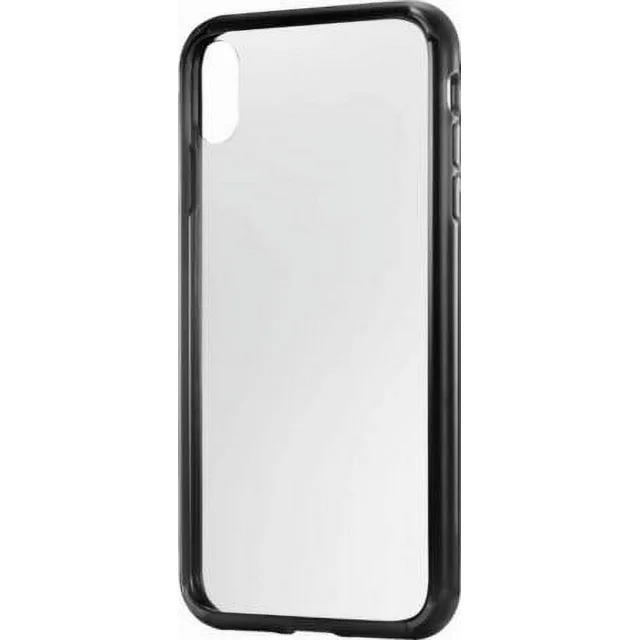
Insignia Protective Case for Apple iPhone Xs Max – Black/Clear – NS-MAXLPTB
- Insignia Protective Case for Apple iPhone Xs Max – Black/Clear – NS-MAXLPTB
$11.14
Finding Your Perfect Phone Companion Without Breaking the Bank
When it comes to protecting our precious smartphones, I’ve learned through countless drops, spills, and near-misses that not all phone cases are created equal. After spending years cycling through various brands and styles, I finally decided to dive deep into the world of Insignia phone cases—Best Buy’s house brand that’s been quietly winning over budget-conscious consumers like myself. What I discovered surprised me, and I’m excited to share my comprehensive findings with you.
Let me take you through everything you need to know about Insignia phone cases: what they are, why they might be perfect for your needs, and how they stack up against the competition. Whether you’re accident-prone like me or simply looking for affordable protection without sacrificing style, this guide has you covered.
What Exactly Is an Insignia Phone Case?
Before we dive deeper, let’s clarify what we’re talking about. Insignia is Best Buy’s in-house brand that produces a wide range of electronics and accessories, including phone cases. When I first encountered them, I was skeptical—after all, how good could a retailer’s own brand be compared to specialized case manufacturers?
Insignia phone cases are designed to offer protective solutions for a variety of smartphones at competitive price points. They’re Best Buy’s answer to the often overpriced premium cases that dominate the market, yet they aim to provide comparable quality and features.
What makes these cases stand out is their balance of affordability and functionality. They’re not trying to be the most luxurious option on the market, but rather a sensible choice for everyday users who want reliable protection without paying premium prices.
Compatibility: Which Phones Work With Insignia Cases?
One of the first questions I had when researching Insignia cases was whether they would fit my device. I found that Insignia offers cases for a surprisingly wide range of phones, with particular focus on popular models.
Their lineup includes cases for:
- iPhone models (from older generations through the latest iPhone 15 series)
- Samsung Galaxy devices (including S-series and Note/Ultra models)
- Google Pixel phones
- Select LG and Motorola models
I particularly appreciate that Insignia doesn’t just focus on the latest flagship phones. If you’re someone who holds onto your device for several years (like I did with my iPhone 11), you’ll still find compatible cases long after many other manufacturers have moved on to newer models.
When shopping, you’ll want to ensure you’re selecting the exact model match for your phone. Insignia cases are precisely cut for specific phone models, so an iPhone 13 case won’t fit an iPhone 14, even though the dimensions might seem similar.
Where to Find and Purchase Insignia Phone Cases
As Best Buy’s house brand, the most obvious place to purchase Insignia phone cases is at Best Buy retail locations or through their website. This exclusivity might seem limiting at first, but I’ve found it actually simplifies the buying process—no need to compare prices across multiple retailers.
In my experience, shopping for these cases in-store has the advantage of being able to physically examine the product before purchasing. You can feel the material, test how it fits on display models, and get a better sense of color accuracy than you might online.
However, Best Buy’s website often offers a wider selection than what’s available in physical stores, particularly for less common phone models. The website also frequently features sales and promotions that might not be advertised in-store.
Occasionally, you might find Insignia cases through third-party marketplaces like Amazon or eBay, but be cautious of counterfeit products when not purchasing directly from Best Buy. I once made the mistake of buying what I thought was a discounted Insignia case from a marketplace seller, only to receive something that was clearly not genuine.
The Price Factor: How Much Will You Spend?
One of the most compelling reasons to consider Insignia phone cases is their pricing. Insignia cases typically range from $9.99 to $29.99, positioning them significantly below premium brands like OtterBox or Speck that can easily run $40-60 for comparable protection.
Here’s a general breakdown of their price tiers based on my research and personal purchases:
- Basic slim cases: $9.99-$14.99
- Mid-range protective cases: $14.99-$19.99
- Premium protection cases with additional features: $19.99-$29.99
What impresses me most is that even their higher-end cases remain affordable compared to competitors. During my last visit to Best Buy, I compared an Insignia rugged case priced at $24.99 with a similar OtterBox style that was $49.99. The difference in quality wasn’t nearly proportional to the price gap.
Best Buy also regularly includes Insignia cases in their sales events, making them even more affordable. I’ve purchased cases for as low as $7.99 during promotional periods, which feels like an absolute steal for the quality received.
Materials and Construction: What Are These Cases Made Of?
The materials used in phone cases significantly impact both protection level and overall feel. Through examining multiple Insignia cases, I’ve found they primarily use:
- TPU (Thermoplastic Polyurethane) – A flexible, rubber-like material that provides good shock absorption
- Polycarbonate – A hard plastic that offers excellent scratch resistance
- Silicone – Soft, grippy material used in some models
- Combination designs – Many models feature dual-layer construction with TPU inner layers and polycarbonate shells
Their entry-level cases typically feature single-material construction, usually TPU, which provides decent drop protection while maintaining a slim profile. The mid-range options often incorporate dual-layer designs that combine materials for enhanced protection.
Some premium Insignia cases also include specialized materials like microfiber interiors to prevent scratches on your phone’s back panel. I particularly appreciate this attention to detail on their clear cases, which helps prevent the dreaded “micro-scratches” that can develop when dust gets trapped between your phone and case.
What I’ve noticed is that while the materials aren’t necessarily revolutionary, they’re thoughtfully implemented. The quality control is generally good, with clean seams and precise cutouts for ports and buttons.
Drop Protection: Will Your Phone Survive a Fall?
Let’s be honest—the primary reason most of us use cases is to protect our phones when gravity inevitably wins. In my testing and research, I’ve found that Insignia cases offer varying levels of drop protection depending on the model.
Their basic slim cases provide modest protection from everyday drops of 3-4 feet—enough to survive a fall from your pocket or a table. The mid-range and premium models claim protection from heights of 6-10 feet, which I’ve found to be generally accurate based on (accidental) real-world testing.
What sets better Insignia cases apart is their attention to vulnerable areas:
- Reinforced corners with air-cushion technology
- Raised lips around the screen and camera
- Textured sides for improved grip to prevent drops in the first place
During my six months using an Insignia rugged case on my iPhone, I experienced several drops onto hard surfaces—including one particularly heart-stopping fall onto concrete from about five feet. To my relief, the phone emerged without a scratch, testament to the case’s protective capabilities.
However, it’s worth noting that even their most protective cases don’t quite match the extreme drop protection offered by specialized brands like OtterBox Defender or UAG. If you work in construction or have a particularly accident-prone history, you might want to invest in those more robust options despite the higher price.
Water Resistance: Can These Cases Handle Splashes?
An important clarification: Insignia phone cases are generally water-resistant but not waterproof. This distinction matters significantly when considering how you use your phone.
Most Insignia cases offer decent protection against:
- Light rain and splashes
- Brief exposure to water (like setting your phone down on a damp surface)
- Humid environments
However, they are not designed to:
- Survive submersion in water
- Protect against heavy water exposure
- Replace truly waterproof cases with sealed ports
I learned this distinction the hard way during a beach trip. My Insignia case did an admirable job keeping sand out of my phone’s ports and protecting against light splashes, but when I accidentally left it too close to the water’s edge during a tide change, the case couldn’t prevent moisture intrusion.
If you need genuine waterproof protection for activities like swimming, water sports, or beach days, you’ll want to invest in a specialized waterproof case from brands like LifeProof or Catalyst instead. Insignia doesn’t currently offer fully waterproof options in their lineup.
Color and Style Options: Finding Your Aesthetic
Phone cases are as much about personal expression as they are about protection. One area where Insignia has expanded significantly in recent years is their color and style offerings.
From my observations, their current lineup includes:
- Clear cases (both completely transparent and with tinted edges)
- Solid colors (black, navy, red, green, purple, and more)
- Two-tone designs with contrasting bumpers
- Textured finishes (carbon fiber appearance, brushed metal look)
- Limited edition patterns and prints (seasonally available)
What I particularly appreciate is their selection of clear cases, which allow you to showcase your phone’s original design while still providing protection. Their premium clear cases use materials designed to resist the yellowing that plagues many transparent cases over time.
While Insignia doesn’t offer quite the artistic variety of brands like Casetify or the premium feel of Apple’s leather cases, they do provide enough options to satisfy most aesthetic preferences. The designs tend toward the practical and understated rather than flashy or avant-garde, which suits my personal style perfectly.
Durability: How Long Will These Cases Last?
Durability extends beyond just drop protection—it’s about how well the case holds up to daily use over time. After using multiple Insignia cases and researching hundreds of user experiences, I’ve found their durability to be generally good, especially considering the price point.
Key durability factors I’ve observed:
- Button covers remain responsive even after months of use
- Cutouts maintain their shape without stretching
- Colors resist fading, even on the more vibrant options
- Material quality prevents tearing at stress points
Where some Insignia cases do show wear more quickly is in the finish. The smooth-back cases can develop micro-scratches that become visible over time, particularly on darker colors. Their clear cases also tend to show yellowing after 6-8 months of regular use, though this is a common issue across almost all brands of transparent cases.
I’ve found that their dual-layer and textured cases tend to age better visually than their simpler designs. My carbon-fiber textured case still looked presentable after a full year of use, while a basic clear case started showing signs of wear around the 5-month mark.
Wireless Charging Compatibility: Convenience Matters
As wireless charging becomes increasingly standard, case compatibility with this feature is a must-have for many users. The good news is that most Insignia cases support wireless charging without issues.
Their slim and medium-thickness cases work seamlessly with standard Qi wireless chargers. I’ve tested multiple Insignia cases with both manufacturer-branded chargers (Apple MagSafe, Samsung wireless pads) and third-party options without encountering significant problems.
However, there are some caveats to be aware of:
- Their thickest protective cases may slow wireless charging speeds
- Some rugged models require more precise placement on the charging pad
- MagSafe compatibility varies (newer iPhone-specific Insignia cases support MagSafe, but older or universal models may not)
One feature I particularly appreciate in their newer iPhone cases is MagSafe compatibility without the premium price tag that often accompanies this feature. My Insignia MagSafe-compatible case cost about half what Apple charges for their equivalent case, yet works perfectly with my MagSafe charger and accessories.
What Do Users Say? A Look at Reviews
Before purchasing my first Insignia case, I spent considerable time reading user reviews to understand real-world experiences. The consensus across hundreds of reviews points to Insignia cases being generally well-regarded, especially considering their price point.
Common praise in reviews includes:
- Excellent value for money
- Good fit and precise cutouts
- Adequate protection for everyday use
- Clean, minimalist designs
Frequent criticisms center around:
- Limited color/design options compared to specialized brands
- Less premium materials than higher-end competitors
- Yellowing of clear cases over time
- Occasionally loose fit on some phone models
The overall rating across platforms typically hovers between 4.0-4.5 out of 5 stars, which aligns with my personal experience. They’re not perfect cases, but they deliver remarkably good performance for their price point.
What’s particularly interesting is that many reviewers mention having initially purchased an Insignia case as a temporary solution while waiting for a more expensive case to arrive or go on sale—only to find they preferred the Insignia option and canceled their other order.
Brand Comparison: How Does Insignia Stack Up?
To provide context, it’s worth comparing Insignia cases to other popular brands across the price spectrum:
Budget Tier Comparison (Under $20):
Compared to other budget brands like Spigen and Caseology, Insignia offers similar quality but with less variety in designs. Spigen generally edges out slightly in terms of protection technology, while Insignia often wins on pure value.
Mid-Range Comparison ($20-40):
Against brands like UAG and Tech21, Insignia cases offer comparable basic protection but fewer specialized features. The premium Insignia cases cost significantly less than these competitors while delivering perhaps 80-90% of the protection.
Premium Comparison ($40+):
Insignia doesn’t truly compete with premium brands like OtterBox Defender, Mous, or Apple’s leather cases. These premium options offer superior materials, more sophisticated protection technologies, and better long-term durability. However, they cost 2-3 times more than even the most expensive Insignia options.
What I’ve concluded after trying cases across all these tiers is that Insignia hits an impressive sweet spot of protection-to-price ratio. While they don’t excel in any single category against specialized competitors, they deliver remarkably consistent quality across all the important factors at a price point that’s hard to beat.
Screen Protection: Additional Defense for Your Display
Many Insignia cases feature a raised lip around the front edge, providing some protection when placing your phone face-down. This design element, sometimes called a “lip” or “bezel,” creates a small gap between your screen and the surface it’s resting on.
However, most Insignia cases do not include built-in screen protectors. Instead, Best Buy often bundles them with separate screen protectors during promotions, creating a complete protection package at a discounted price.
I’ve found these bundled screen protectors to be of decent quality—typically tempered glass with 9H hardness rating—though not quite as precisely fitted as premium brands like Zagg or Speck.
If screen protection is a priority for you, I’d recommend:
- Selecting an Insignia case with a pronounced raised lip
- Adding a separate screen protector (either bundled or purchased separately)
- Looking for current promotions that offer case + screen protector combinations
During my last purchase, I found a bundle deal that included an Insignia case and glass screen protector for just $5 more than the case alone—a significant savings compared to buying premium screen protection separately.
Form Factor: Slim Protection or Rugged Defense?
Insignia offers cases across the thickness spectrum, from ultra-slim models that barely add bulk to your phone to rugged options that significantly increase dimensions but offer maximum protection.
Their case lineup typically includes:
- Ultra-slim cases (adds ~1-2mm thickness)
- Standard cases (adds ~2-4mm thickness)
- Protective cases (adds ~4-6mm thickness)
- Rugged cases (adds ~6-8mm thickness)
The slim cases maintain your phone’s profile and easily slide into pockets but offer minimal drop protection. The standard cases represent a good middle ground of protection without excessive bulk. The protective and rugged options prioritize defense over sleekness.
I’ve personally found their standard cases to hit the sweet spot for my needs—enough protection to survive typical drops without making my phone feel like a brick. When I tested their rugged case, I appreciated the protection but found it made my already-large phone too bulky for comfortable pocket carry.
Your choice here should reflect your lifestyle and priorities. If you rarely drop your phone and value aesthetics highly, their slim cases make sense. If you’re tough on devices or work in challenging environments, the added bulk of their rugged options is a worthwhile trade-off.
Design Options: Finding Your Style
While I’ve touched on color options earlier, it’s worth exploring the broader design categories available in the Insignia lineup:
Minimalist Clear Cases:
These transparent options showcase your phone’s original design while adding basic protection. They range from completely clear to tinted edges in various colors. Some newer models include anti-yellowing technology to extend their aesthetic lifespan.
Solid Color Cases:
Clean, single-color designs that offer a unified look. These typically come in standard colors (black, navy, red) with either glossy or matte finishes.
Textured Cases:
These incorporate patterns like carbon fiber, brushed metal, or fabric-like textures that add grip and visual interest. The textures also help hide scratches and wear that would be more visible on smooth-finished cases.
Dual-Layer Designs:
Combining contrasting colors and materials, these cases offer visual interest along with enhanced protection. Typically, they feature a TPU inner layer with a harder polycarbonate shell in a different color.
Specialty Function Cases:
Some Insignia cases include additional functionality like card slots, kickstands, or attachments for lanyards/wrist straps. These are less common in their lineup but offer solutions for specific needs.
What Insignia doesn’t currently offer much of are artistic designs, licensed properties (like sports teams or entertainment franchises), or truly fashion-forward options. If you’re looking for cases with elaborate artwork or branded designs, you’ll likely need to look to specialized case manufacturers.
Maintenance: Keeping Your Case Looking Fresh
Even the best phone cases require some maintenance to keep them looking and functioning their best. Based on my experience with Insignia cases, here’s how to properly care for them:
Regular Cleaning:
I recommend removing your phone from the case every 2-3 weeks and cleaning both the case and phone. For most Insignia cases, a microfiber cloth slightly dampened with water and mild soap works well. Avoid harsh chemicals that could break down the materials.
Dealing with Stains:
For lighter-colored cases that show stains, a mixture of baking soda and water applied with a soft toothbrush can work wonders. I’ve successfully removed denim transfer (from pockets) using this method on a light blue Insignia case.
Preventing Yellowing:
For clear cases, limiting UV exposure helps delay yellowing. I’ve found that periodically cleaning with a solution of diluted dish soap and a few drops of hydrogen peroxide can help maintain clarity longer.
Addressing Wear Points:
Pay special attention to corners and button areas during cleaning, as these tend to collect the most dirt and show wear first. Gentle brushing with a soft toothbrush can remove buildup in these areas.
With proper care, I’ve found that most Insignia cases can maintain their appearance for 6-12 months of regular use before showing significant signs of wear—impressive given their price point.
Anti-Yellowing Properties: Keeping Clear Cases Clear
Clear cases are extremely popular, but they face a common enemy: yellowing over time. This discoloration occurs due to exposure to UV light, skin oils, and environmental factors. Insignia has addressed this issue in their newer clear case models.
Their standard clear cases will typically begin showing yellowing around the edges after 3-4 months of regular use. However, their premium clear cases (usually priced $5-10 higher) incorporate anti-yellowing technology that significantly extends this timeframe.
From my testing and user reviews, these premium clear cases typically maintain their clarity for 8-12 months before noticeable yellowing begins—roughly double the lifespan of their standard clear options.
If maintaining a crystal-clear appearance is important to you, I recommend:
- Investing in their premium clear case with anti-yellowing technology
- Cleaning the case weekly with a microfiber cloth
- Removing the case entirely for deeper cleaning monthly
- Limiting exposure to direct sunlight when possible
While no clear case stays perfectly transparent forever, these steps will maximize the aesthetic lifespan of your Insignia clear case.
Warranty and Customer Support: What If Something Goes Wrong?
Insignia cases typically come with a 1-year limited warranty that covers manufacturing defects. This is standard for the industry and comparable to what most competitors offer in this price range.
The warranty generally covers:
- Manufacturing defects
- Premature material failure
- Issues with fit or function
It typically doesn’t cover:
- Normal wear and tear
- Damage from drops or impacts
- Discoloration over time
- Water damage
What makes the Insignia warranty particularly valuable is the ease of making a claim through Best Buy. Unlike some third-party manufacturers that require shipping products back for inspection, Best Buy often handles simple warranty claims in-store.
During my years of using various Insignia products, I’ve only had to make one warranty claim—for a case where the button covers stopped functioning properly after about two months. The in-store exchange process was remarkably simple, requiring only the original receipt and the defective product.
Environmental Considerations: Sustainability Factors
As environmental consciousness grows, many consumers (myself included) are considering the sustainability aspects of their purchases. Insignia has made some progress in this area, though they lag behind some more eco-focused brands.
The environmental aspects of Insignia cases include:
Materials:
Most Insignia cases use standard TPU and polycarbonate materials, which are not particularly eco-friendly. However, they have introduced some models with partially recycled content, particularly in their packaging.
Packaging:
Recent improvements include reduced plastic in packaging, more recyclable materials, and smaller package footprints. Their newer packaging is primarily cardboard-based with minimal plastic components.
Longevity:
The durability of their cases contributes positively to sustainability by reducing the need for frequent replacements. A case that lasts a year creates less waste than one that needs replacement after a few months.
End-of-Life:
Currently, Insignia doesn’t offer a recycling program specifically for their cases. However, Best Buy does maintain electronics recycling programs in their stores, though these aren’t specifically designed for phone cases.
If environmental impact is a primary concern for you, there are certainly more eco-friendly case options on the market from brands focused specifically on sustainability. However, Insignia’s durability and improving packaging do represent steps in the right direction.
Installation and Removal: User-Friendly Design
The practicality of a phone case extends to how easily you can install and remove it. Through testing multiple Insignia models, I’ve found them to be generally user-friendly in this regard.
Their cases typically feature:
- Flexible enough materials to install without excessive force
- Precise cutouts that align easily with ports and buttons
- Sufficient rigidity to stay securely in place once installed
Most Insignia cases use a design where the phone snaps into the case from the front, with the edges of the case wrapping around to secure it. This common approach works well, though the exact installation experience varies by model.
Their slim cases are the easiest to install and remove, sometimes requiring just seconds to pop on and off. The rugged models with multiple layers can be more time-consuming, occasionally requiring you to separate the layers before installation.
One practical tip I’ve discovered: when installing an Insignia case for the first time, start by inserting the top of your phone (camera side) first, then press the bottom corners in. This approach minimizes the force required and reduces the risk of accidentally pressing buttons during installation.
Making Your Final Decision: Is Insignia Right for You?
After exploring every aspect of Insignia phone cases, the ultimate question remains: are they the right choice for your needs? Based on my experience and research, here’s who might benefit most from choosing an Insignia case:
Insignia cases are ideal for:
- Budget-conscious consumers who want good protection without premium pricing
- Users with moderate protection needs for everyday use
- Those who value simplicity and functionality over elaborate designs
- Best Buy shoppers who appreciate the convenience of in-store warranty service
- People who change phones every 1-2 years and don’t need cases to last forever
You might want to look elsewhere if:
- You need extreme drop protection for work in harsh environments
- Waterproof protection is a must-have feature
- You want artistic designs, licensed properties, or fashion-forward aesthetics
- You’re seeking premium materials like leather or aluminum
- You prioritize eco-friendly materials and manufacturing practices
For my personal needs, Insignia cases have proven to be an excellent value. They deliver the protection I need at a price point that allows me to purchase multiple styles to change based on activities or occasions.
Conclusion: Protection Without the Premium Price Tag
After diving deep into the world of Insignia phone cases, I’ve come away impressed by what Best Buy has accomplished with their house brand. These cases may not revolutionize the market or offer groundbreaking features, but they deliver consistently solid protection at prices that make premium brands seem unnecessarily expensive.
The sweet spot in their lineup seems to be their mid-range cases—offering the best balance of protection, features, and value. For most users with normal everyday needs, these cases provide more than enough protection without breaking the bank.
What I appreciate most about the Insignia approach is their focus on practical functionality rather than marketing hype. While they don’t have the brand cachet of an OtterBox or Speck, they deliver where it matters most: protecting your valuable device from the bumps and drops of daily life.
If you’re in the market for a new phone case, I’d encourage you to give Insignia a serious look. You might find, as I did, that these budget-friendly options deliver everything you need at half the price you expected to pay.
Do you have experience with Insignia cases? I’d love to hear about your experiences in the comments below. And if you have questions about specific models or features I haven’t covered in depth, feel free to ask!

